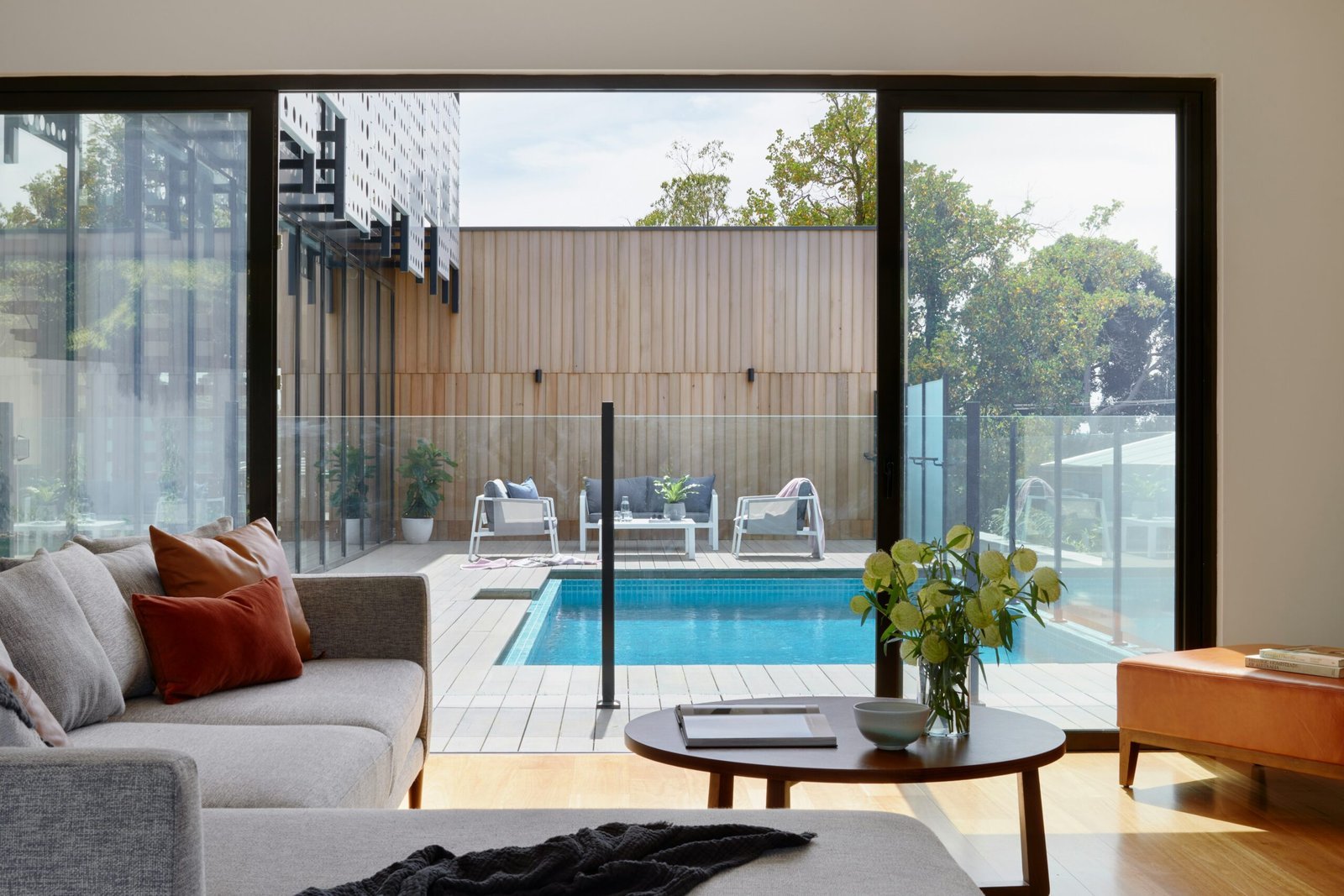
ADUs and the Housing Crisis
Accessory Dwelling Units (ADUs) have emerged as a significant component in addressing the ongoing housing crisis in California. These secondary housing units, which can be situated on the same lot as a single-family home, can take forms such as garages, basement apartments, or standalone cottages. The notion of ADUs is quickly gaining traction among homeowners who are seeking to capitalize on their property while simultaneously contributing to the alleviation of the state’s pressing housing shortages.
The housing crisis in California has been characterized by soaring home prices and a lack of affordable options for many residents. Contributing factors to this crisis include a rapidly growing population, limited housing supply, and restrictive zoning laws that have historically hindered the development of new housing. As a result, many individuals and families find themselves priced out of the traditional housing market. In this context, ADUs present a viable and innovative solution to increasing the overall housing supply while transforming underutilized spaces into functional homes.
With the demand for affordable housing steadily increasing, California’s lawmakers have recognized the potential of ADUs as a practical approach to mitigate the crisis. Recent legislation has been enacted to simplify the approval process for ADU construction, reduce fees, and provide incentives for homeowners to build these units. This shift in policy reflects a growing acknowledgment of the importance of alternative housing solutions in bolstering California’s housing market.
The trend of homeowners considering ADUs as a feasible addition is evolving, driven by both economic benefits and social responsibility. Beyond enhancing the property’s value, homeowners can benefit from additional rental income while providing much-needed shelter to family members or tenants. In light of these advantages, ADUs not only serve to address immediate housing needs but also foster a more inclusive community framework in California.
Legislative Changes Supporting ADUs in 2025
In recent years, California has observed significant shifts in its housing landscape, particularly with the introduction of Accessory Dwelling Units (ADUs). In 2025, several legislative changes have been enacted to bolster the construction and utilization of these units, thereby addressing the pressing housing shortage in the state. One of the pivotal laws passed this year is the streamlining of the permitting process for ADUs. This change effectively reduces the time and complexity traditionally associated with applying for construction permits, making it easier for homeowners to incorporate these units on their properties.
Additionally, significant emphasis has been placed on reducing fees related to ADU construction. These financial adjustments may include waiving or lowering impact fees, which have often deterred homeowners from pursuing ADUs. By alleviating these costs, the state encourages more property owners to consider building secondary housing options. This move not only supports individual homeowners but also contributes to the broader goal of enhancing the housing market’s growth.
Moreover, the new legislation emphasizes sustainable building practices, which is crucial in the context of climate change and environmental responsibility. Laws enacted in 2025 promote the use of sustainable materials and energy-efficient designs for ADUs. This initiative not only benefits the environment but also aligns with California’s long-term sustainability goals. Furthermore, such practices are expected to appeal to eco-conscious homeowners, increasing the desirability of ADUs in the housing market.
The combined impact of these legal adjustments creates a more favorable environment for the development of ADUs, ultimately offering homeowners viable options for additional income, multi-generational living spaces, or simply enhancing their property value. By fostering a supportive ecosystem for ADU construction, California aims to address its housing crisis while simultaneously promoting innovative and sustainable practices in real estate development.
Design Trends for ADUs in 2025
As accessory dwelling units (ADUs) continue to gain momentum in California housing, 2025 is poised to showcase a variety of innovative design trends that prioritize both aesthetics and functionality. Architectural concepts are evolving to create spaces that not only address the pressing need for housing but also enhance the quality of life for their occupants. One significant trend is the emphasis on modular design, which allows for customizable configurations that can adapt to different lifestyles and living arrangements.
Space optimization remains a critical focus in ADU design, particularly as real estate prices in California soar. Designers are implementing creative solutions such as multi-functional furniture and open floor plans that maximize usable space without compromising on comfort. This trend caters specifically to the needs of diverse demographics, making ADUs suitable for everyone from single professionals to multi-generational families. As such, the incorporation of flexible living arrangements is becoming increasingly popular, allowing residents to redefine how they inhabit their homes.
Another noteworthy trend is the integration of eco-friendly materials in ADU construction. In response to growing environmental concerns, many builders are now prioritizing sustainable designs that utilize reclaimed wood, energy-efficient appliances, and solar panels. This commitment not only enhances the overall energy efficiency of the units but also appeals to environmentally-conscious consumers who value modern amenities in line with sustainable practices.
Furthermore, increasing attention is being paid to indoor-outdoor living spaces within ADUs. Designing seamless transitions between interior and exterior areas encourages a connection with nature, fostering a healthier lifestyle for residents. This trend is becoming more prevalent as people seek to enhance their living environments by embracing natural light and outdoor views.
Overall, the design trends for ADUs in 2025 reflect a holistic approach to housing that considers aesthetic value, sustainability, and practical functionality, ensuring these units serve a broad spectrum of living situations and consumer preferences.
Financing Options for Building ADUs
As the demand for Accessory Dwelling Units (ADUs) continues to grow in California, understanding the financing options available to homeowners is critical. Building an ADU can be a significant investment, yet various programs and resources have emerged to aid homeowners in navigating this process.
One viable option is leveraging state programs specifically designed to promote the construction of ADUs. For instance, the California Housing Finance Agency (CalHFA) offers several loan programs that cater to ADU construction, including low-interest loans aimed at increasing affordable housing availability. These programs often include favorable terms, which may be beneficial for homeowners seeking to minimize financial strain.
In addition to state-sponsored loans, grants are available through various local initiatives. Some municipalities offer financial assistance or grants to encourage the development of affordable housing solutions, including ADUs. Homeowners should actively research what is available in their city or county, as local programs can significantly alleviate funding challenges.
Tax incentives are another critical financing avenue for those interested in building ADUs. The state of California allows certain tax benefits that can alleviate the financial burden associated with construction costs. For example, the property tax reassessment exclusion for newly constructed ADUs offers homeowners the opportunity to maintain their existing property tax base, thus encouraging more people to invest in such projects.
Private lenders also present a practical option for financing ADUs. Many banks and financial institutions provide home equity loans or lines of credit that allow homeowners to tap into their property’s value to finance new construction. This method can be an efficient way to secure funds quickly and at competitive interest rates.
In conclusion, financing an ADU involves exploring various options, from state programs to tax incentives and private lending solutions. With the right information and resources, homeowners can make the dream of adding an ADU a reality. By carefully evaluating these financial avenues, individuals can position themselves to successfully invest in their property and enhance housing availability in California.
Impact of ADUs on Property Values
Accessory Dwelling Units (ADUs) have emerged as a significant trend in California’s housing landscape, particularly in 2025. The integration of ADUs into residential properties has not only diversified housing options but has also influenced property values in notable ways. Numerous market analyses have shown that properties equipped with ADUs often experience a higher appreciation rate than their non-ADU counterparts. This trend underscores the investment potential of adding an ADU, as homeowners seek to maximize their property’s worth amidst a dynamic real estate market.
According to data from recent housing reports, properties featuring ADUs have appreciated by approximately 15-20% more over the last five years than those without. This increase can be attributed to several factors, including the rising demand for rental units and the increasing acceptance of multi-generational living arrangements. Case studies in neighborhoods across California reveal that homes with ADUs have not only provided additional rental income but have also attracted buyers who value flexibility in living arrangements.
Furthermore, the financial implications of having an ADU extend beyond mere property appreciation. Homeowners with ADUs can capitalize on the ever-growing rental market, generating consistent income streams that can offset mortgage payments or contribute to property upgrades. This aspect has made ADUs an appealing option for many, turning them into viable financial assets that enhance overall household revenue.
Additionally, local governments have begun to support the development of ADUs through streamlined permitting processes and incentives. This backing indicates a recognition of ADUs’ role in alleviating housing shortages while simultaneously bolstering property values. Investors and homeowners alike should consider the potential benefits associated with ADUs, as the current trends suggest a positive correlation between these units and enhanced market performance in California’s ever-evolving real estate landscape.
Community Perspectives: Neighborhoods Embracing ADUs
As Accessory Dwelling Units (ADUs) become increasingly prevalent in California, neighborhood reactions have varied significantly, showcasing a diverse tapestry of opinions and experiences. In urban areas like Los Angeles, residents have largely embraced the rise of ADUs, viewing them as innovative solutions to pressing housing shortages. For many community members, ADUs offer a practical means to accommodate extended family living arrangements while also contributing to the local rental market. Homeowners express satisfaction in being able to utilize their properties more effectively, balancing personal needs with broader community benefits.
Conversely, some neighborhoods exhibit resistance to ADU developments, driven by concerns over potential changes to the character of their communities. In suburban areas, long-time residents often fear that the construction of additional units may lead to increased density and strain local resources such as parking, schools, and public services. To address these concerns, local governments and planning boards have sought to implement regulations that can help mitigate the impact of ADUs on existing neighborhoods. These regulations often include specific design standards and restrictions on height and size to ensure that new developments harmoniously integrate into the fabric of the community.
Case studies from various neighborhoods illustrate how dialogue between residents and planners can foster positive outcomes. For example, in San Diego, a pilot program designed to engage community input on ADU designs has successfully eased concerns. Stakeholder meetings encourage collaboration and allow residents to voice their preferences regarding aesthetics and infrastructure, ensuring that ADUs blend seamlessly with their surroundings.
This proactive approach has allowed many neighborhoods to not only adapt to the growing presence of ADUs but also to celebrate the cultural shift they represent in California’s evolving housing landscape. As communities continue grappling with housing challenges, embracing ADUs seems increasingly essential, paving the way for more inclusive and diverse residential environments.
Sustainability and ADUs: Eco-Friendly Living
As the world continues to grapple with environmental challenges, the demand for sustainable housing solutions has surged. Accessory Dwelling Units (ADUs) are playing a pivotal role in this movement towards eco-friendly living in California. These compact structures not only provide additional housing options but also contribute significantly to reducing individuals’ and communities’ carbon footprints.
The design of ADUs inherently promotes sustainability. By utilizing smaller footprints than traditional homes, these units require fewer materials for construction and result in reduced consumption of energy for heating and cooling. Innovative design elements, such as passive solar heating and cross-ventilation, further enhance their eco-friendliness. This thoughtful architectural approach minimizes the need for extensive mechanical systems, allowing homeowners to enjoy a comfortable living environment while using less energy.
Energy-efficient systems are a hallmark of many ADUs, reflecting the emphasis on sustainable living. Many units are equipped with solar panels, which harness renewable energy from the sun, enabling homeowners to significantly reduce their reliance on non-renewable energy sources. Additionally, modern ADUs often feature high-efficiency appliances, insulation, and LED lighting, which all contribute to more sustainable energy consumption. By integrating these systems, the overall environmental impact of homeowners is lessened, aligning with broader efforts to combat climate change.
Furthermore, ADUs promote a more environmentally responsible lifestyle through their potential for reduced transportation emissions. By situating these units in existing neighborhoods, residents are encouraged to utilize public transport, bike, or walk to nearby amenities, thus limiting the need for cars. The compact nature of ADUs, combined with their locations within urban environments, supports a connected and sustainable community where individuals can coexist with minimal impact on their surroundings.
Challenges and Considerations for Homeowners
Building an Accessory Dwelling Unit (ADU) offers homeowners in California a unique opportunity to enhance their property while addressing the state’s housing crisis. However, the journey to constructing an ADU is not without its challenges. One of the primary hurdles is navigating the complex web of zoning regulations. Homeowners must familiarize themselves with local ordinances that dictate where ADUs can be placed, their size, and the necessary permits. These regulations vary significantly from one municipality to another, which can lead to confusion and delays in the development process.
Another significant consideration is neighborhood resistance. Homeowners may encounter opposition from neighbors who fear that the addition of an ADU will alter the character of their community, lead to overcrowding, or decrease property values. Effective communication and community engagement are essential tools for addressing these concerns. By approaching local residents with transparency, homeowners can foster a dialogue that may alleviate resistance and build support for their project.
Construction costs are a vital factor to contemplate as well. While ADUs can potentially increase property value, the initial investment can be substantial. Homeowners must assess their financial capability and consider securing financing options tailored for construction endeavors. Moreover, unexpected costs often arise during the building process, so having a contingency fund is advisable in order to address any unforeseen expenses.
Lastly, ongoing management of the ADU presents its own challenges. Whether the unit is rented out for additional income or utilized for family members, homeowners must be prepared for the responsibilities associated with property management. This includes tenant relations, maintenance, and complying with rental regulations. By thoroughly researching these aspects and preparing accordingly, homeowners can effectively navigate the challenges of creating an ADU.
The Future of Housing: ADUs as a Long-Term Solution
As we look toward the future of housing in California, accessory dwelling units (ADUs) are increasingly recognized as a vital component of solving the ongoing housing crisis. With persistent shortages driving up prices and limiting availability, ADUs offer a feasible approach to augmenting housing supply without significantly altering existing neighborhoods. Their versatility—serving as rental units, multi-generational living spaces, or even home offices—positions ADUs as adaptable solutions that can meet diverse needs in an evolving urban landscape.
Governmental policies are expected to continue evolving to facilitate the growth of ADUs. Recent legislative efforts have aimed to simplify the permitting process, reduce regulatory barriers, and offer financial incentives for homeowners looking to build or convert existing structures into ADUs. These changes not only foster an environment supportive of ADU development but also align with broader sustainability goals. By encouraging homeowners to develop these units, California can effectively utilize underused residential spaces, enhancing community density while minimizing urban sprawl.
Cultural acceptance of ADUs is also on the rise. As more homeowners recognize the value of these units, either for personal use or as sources of supplemental income, a shift in perception is taking place. Communities are beginning to view ADUs not just as supplemental structures but as integral elements capable of enriching neighborhoods. This progressive attitude towards ADUs signifies a departure from traditional housing models, embracing a more inclusive and diverse notion of what urban living can entail.
In conclusion, ADUs hold the potential to reshape California’s housing landscape fundamentally. Their role as a long-term solution is augmented by changing policies and growing cultural acceptance, reflecting a collective understanding that these units offer viable pathways to address housing shortages sustainably. As we enter 2025, the ongoing commitment to promoting ADUs will undoubtedly bring optimism to those seeking innovative solutions to modern housing challenges.


